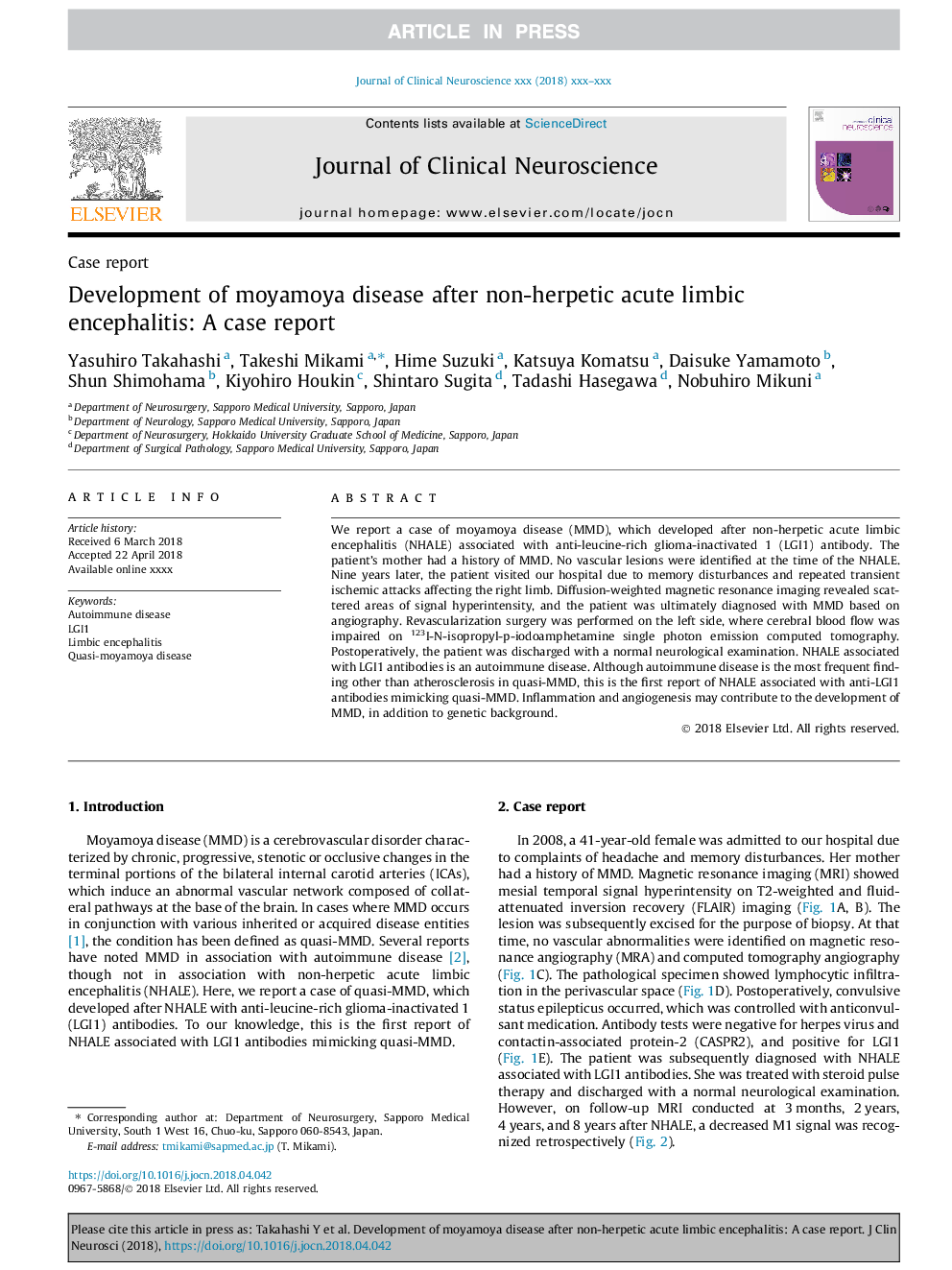| Article ID | Journal | Published Year | Pages | File Type |
|---|---|---|---|---|
| 8685086 | Journal of Clinical Neuroscience | 2018 | 4 Pages |
Abstract
We report a case of moyamoya disease (MMD), which developed after non-herpetic acute limbic encephalitis (NHALE) associated with anti-leucine-rich glioma-inactivated 1 (LGI1) antibody. The patient's mother had a history of MMD. No vascular lesions were identified at the time of the NHALE. Nine years later, the patient visited our hospital due to memory disturbances and repeated transient ischemic attacks affecting the right limb. Diffusion-weighted magnetic resonance imaging revealed scattered areas of signal hyperintensity, and the patient was ultimately diagnosed with MMD based on angiography. Revascularization surgery was performed on the left side, where cerebral blood flow was impaired on 123I-N-isopropyl-p-iodoamphetamine single photon emission computed tomography. Postoperatively, the patient was discharged with a normal neurological examination. NHALE associated with LGI1 antibodies is an autoimmune disease. Although autoimmune disease is the most frequent finding other than atherosclerosis in quasi-MMD, this is the first report of NHALE associated with anti-LGI1 antibodies mimicking quasi-MMD. Inflammation and angiogenesis may contribute to the development of MMD, in addition to genetic background.
Related Topics
Life Sciences
Neuroscience
Neurology
Authors
Yasuhiro Takahashi, Takeshi Mikami, Hime Suzuki, Katsuya Komatsu, Daisuke Yamamoto, Shun Shimohama, Kiyohiro Houkin, Shintaro Sugita, Tadashi Hasegawa, Nobuhiro Mikuni,
